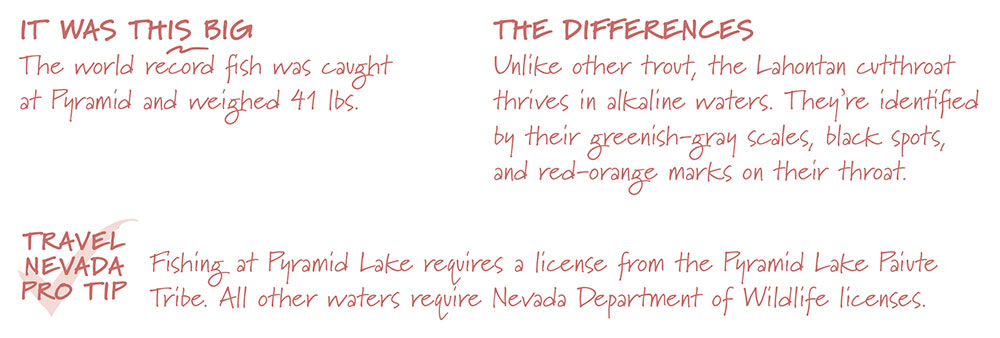Where The Wild Things Are
February – April 2022
These wild icons define the Silver State.
While the bald eagle serves as a national emblem for the U.S., the states tend to take icons to a new level. Sure, there’s a state animal in Nevada, but there’s also a reptile, fish, and even a state insect. Without further ado, here are five creatures that Nevadans chose to embody the spirit of the state.
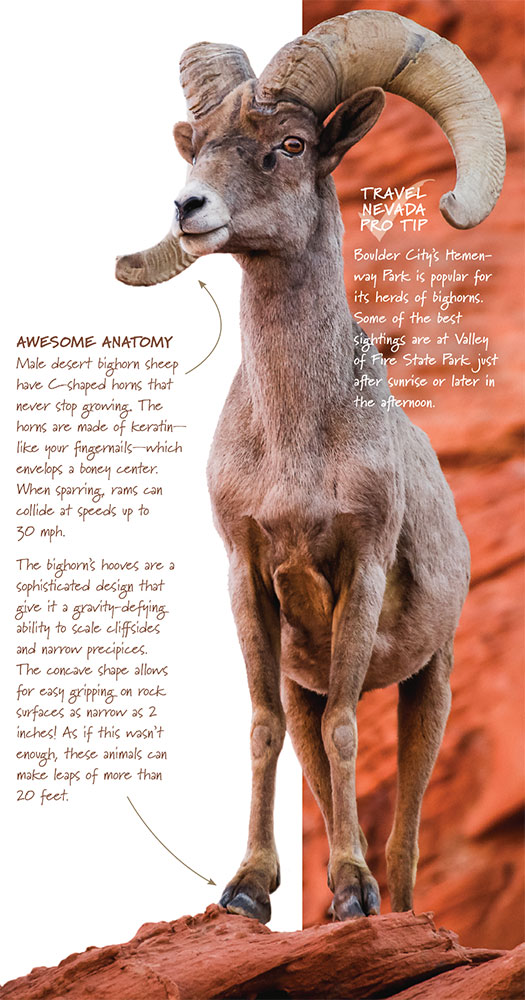
STATE ANIMAL (1973)—DESERT BIGHORN SHEEP
Ovis canadensis nelsoni
It’s tough to think of a better mascot than the desert bighorn sheep. These survivalists are perfectly at home in harsh environments and thrive in treacherous terrain. Their willingness to adapt to difficult conditions is the secret to their success: few predators are willing to meet these nomads on equal footing. The bighorn sheep is often found on canyon cliffsides, deep ravines, and steep washes.
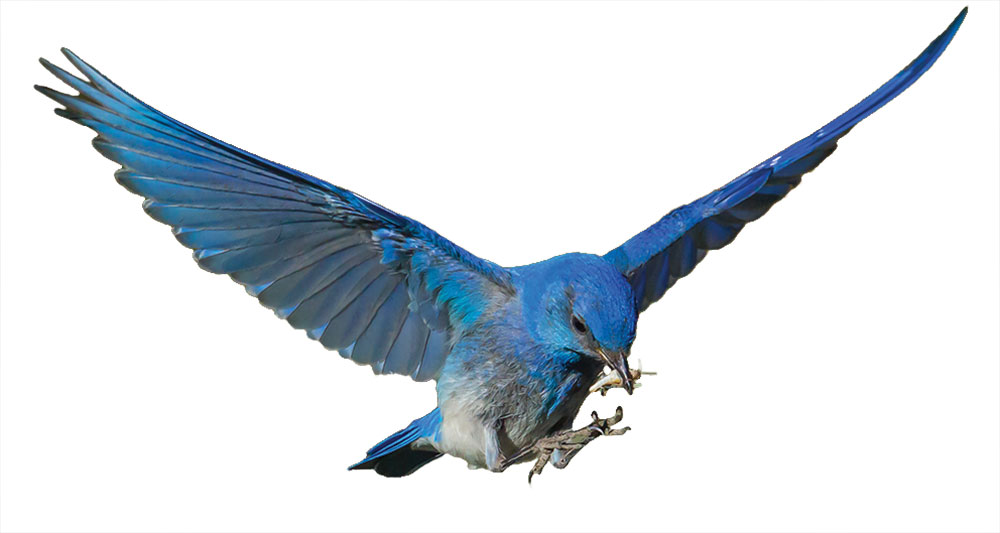

STATE BIRD (1967)—MOUNTAIN BLUEBIRD
Sialia currucoides
Nevada’s avian representative is well chosen—and not just because its powder-blue plumage matches our state flag. Preferring to nest at elevations between 5,000-12,000 feet, the bluebird finds itself at home in the state’s numerous mountain ranges. If you’re looking for its prime habitat, stay clear of thick forests, and instead look for meadows with scattered trees and perches.
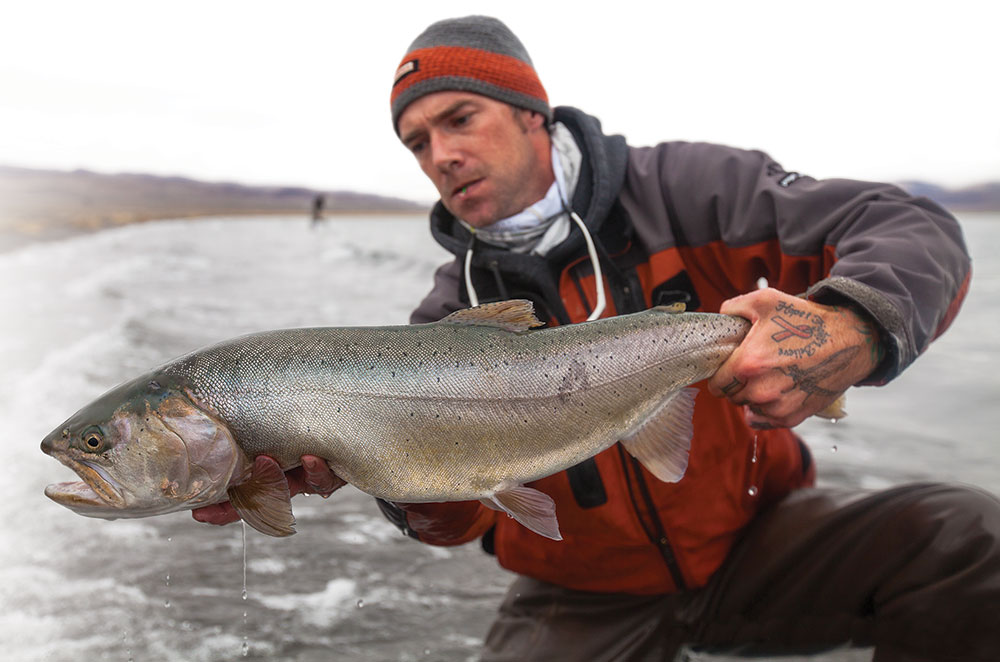
STATE FISH (1981)—LAHONTAN CUTTHROAT TROUT
Oncorhynchus clarkia henshawi
The Lahontan cutthroat trout is Nevada’s ultimate ecological comeback story. For thousands of years, this fish—native to the waters in and around Pyramid Lake—was a vital food source for the Paiute and others living in the Great Basin. By the late 1800s, however, settlers began overfishing and removed spawning grounds with the construction of dams. By 1943, the trout population was believed to be gone.
In the late 1970s, biologists discovered a species of trout inhabiting two creeks on Pilot Peak, which straddles the Utah-Nevada border. DNA testing verified these trout were in fact Lahontan cutthroats that someone must have brought to the remote mountain. In 2006, the Lahontan cutthroat trout was reintroduced into Pyramid Lake, Walker Lake, and rivers and streams throughout the state.
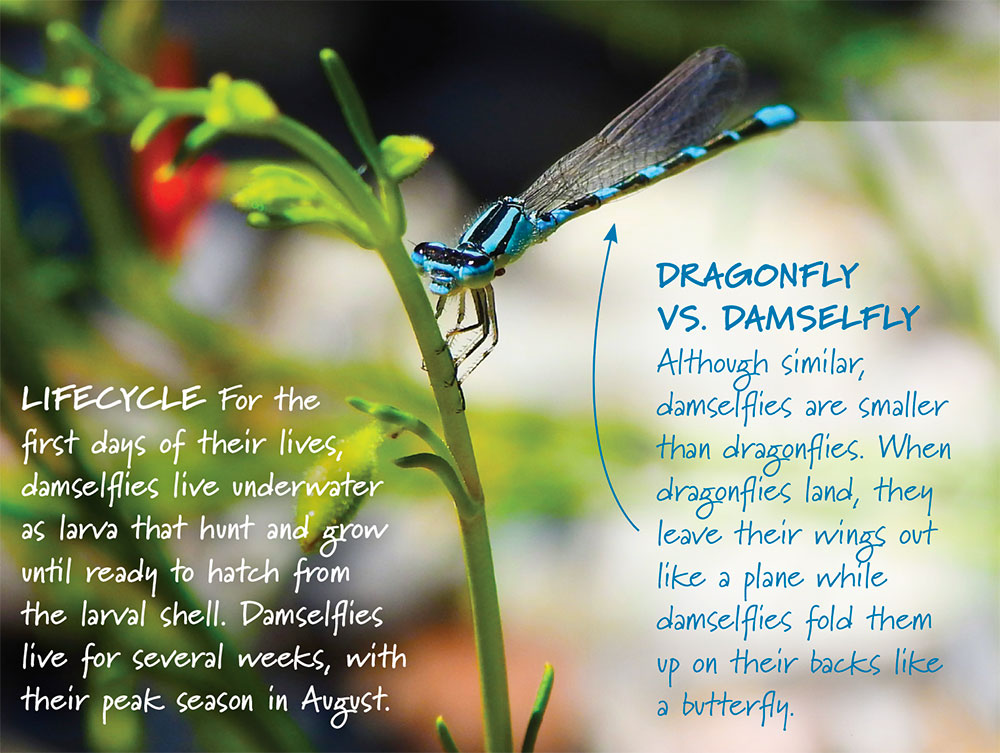
STATE INSECT (2009)—VIVID DANCER DAMSELFLY
Argia vivida
Believe it or not, Nevada didn’t have a state insect until a contest was held a decade ago to find the best bug representative. Students at Beatty Elementary School passionately took up the challenge, even testifying before the legislature that there was just one insect for the job: the vivid dancer damselfly. According to the students, it was the best because it’s found everywhere, it’s great at killing flies and mosquitos, and—of course—because it’s blue.
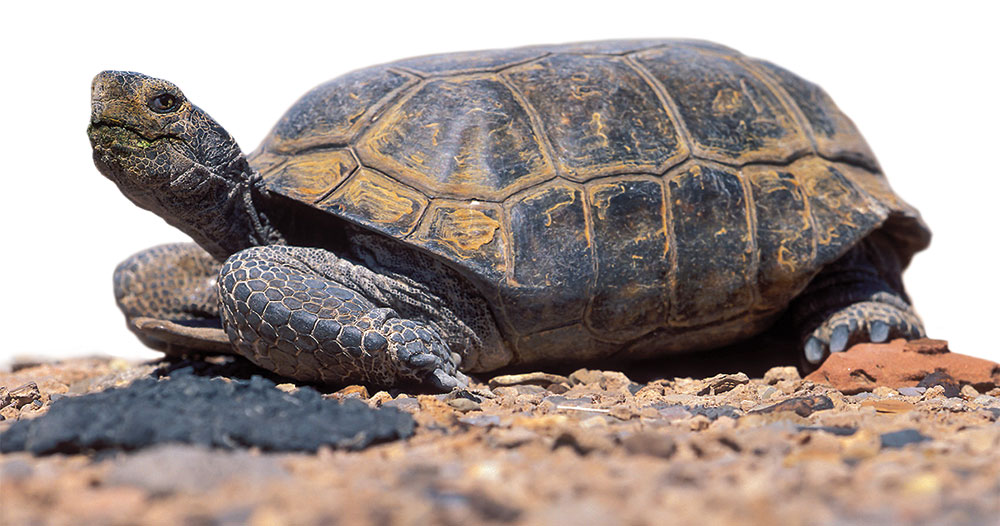
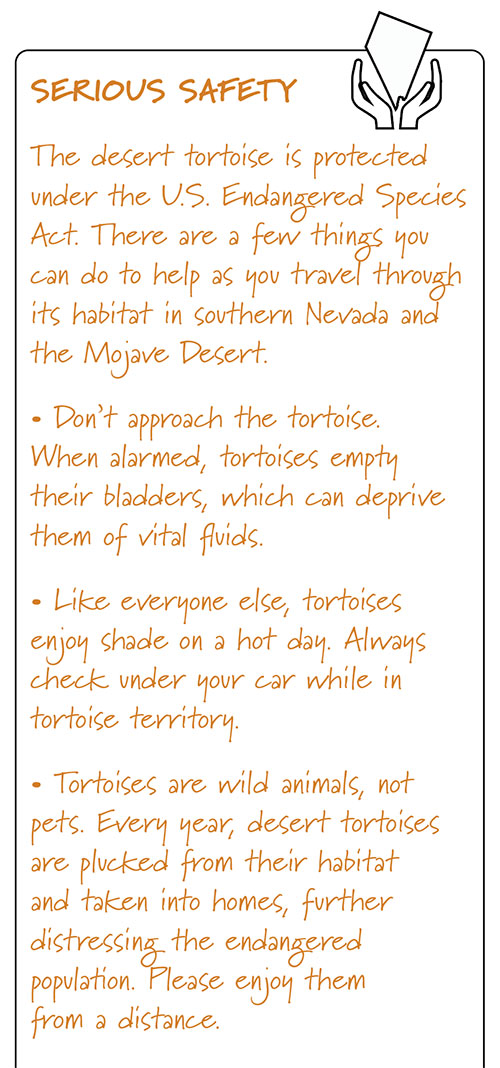
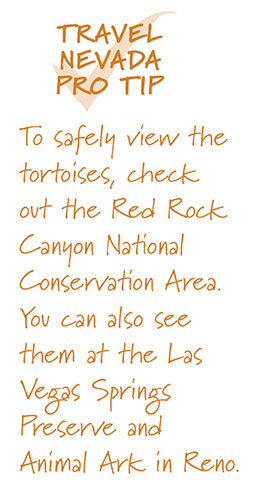 STATE REPTILE (1989)—DESERT TORTOISE
STATE REPTILE (1989)—DESERT TORTOISE
Gopherus agassizii
Weighing up to 45 pounds, the desert tortoise is the largest reptile in the Mojave Desert, and also one of the longest living. They are known to live up to 50 years in the wild, with some reaching as old as 80. Scientists aren’t sure why tortoises live so long, but it might have something to do with their slow metabolism.
Tortoises spend a lot of time—around 95 percent of their lives—relaxing in their underground burrows. When they come out to eat, it’s usually after a rainstorm or when the desert is in bloom. Tortoises are herbivores and enjoy a healthy diet of leaves, grass, shrubs, and bark.


